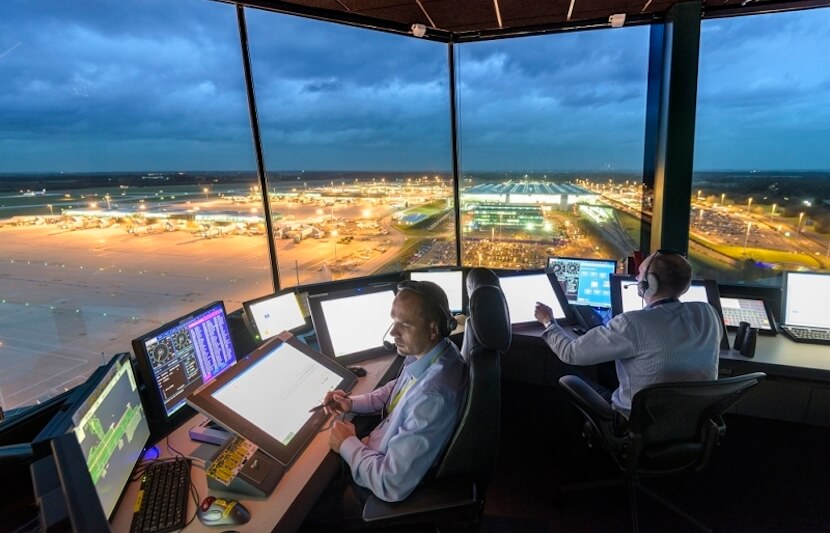Cranfield University, the only university in Europe with its own airport and runway, has recently agreed to have a digital control tower installed at Cranfield Airport. The new digital tower will be installed by Saab Digital Air Traffic Solutions AB, a Swedish aerospace company, in the next couple of years.
The new digital tower — the first to be installed in the UK — is expected to boost safety at a reduced cost and enhance the university’s research capabilities.
“The digital control tower will be a significant boost for Cranfield Airport and the research capabilities of the University,” Professor Sir Peter Gregson, vice-chancellor and chief executive of Cranfield University, said in a statement. “Combined with our existing and new facilities, the digital control tower will cement Cranfield’s place as the home of the leading aerospace research facilities in Europe.”
Ordinarily, observation from an air traffic control tower is the primary method of controlling the immediate airport environment — the movement of aircraft and vehicles on taxiways and runways as well as aircraft in the air near the airport. In bigger airports, the system may be supplemented with a radar system. A relatively new option is a remote and virtual tower, such as the one selected by Cranfield University for its airport, which can control air traffic, even from multiple airports, from a remote location.
The new air traffic solution was created by Saab since 2006 as a smarter, cost-effective option to the traditional control tower. Once the system was approved for use in 2015, it was installed in two airports in Sweden — Örnsköldsvik and Sundsvall Timrå — which are the world’s first remotely controlled airports in the world.
Advantages of Digital Control Tower
A digital control tower obviates the need for a physical building manned by air traffic controllers at airports. Instead, airports can use a mast, equipped with HD cameras and sensors, to record everything that takes place out in the airfield. All the data and recordings are sent digitally and projected on large screens in a remote digital control tower, so the controller has a 360-degree view. To make sure all the data is sent even when interrupted, the system receives data through several routes.
In a digital control tower, controllers can see the whole airfield as if they were physically sitting inside a traditional control tower, but better.
A digital control tower increases flight safety by giving controllers greater situational awareness. The camera technology allows controllers to monitor air traffic in a much more detailed way, such as zooming in on a single area or activating radar display. Also, by adjusting the images automatically, this technology helps controllers cope more easily with difficult light conditions, such as direct sunlight or snow reflections. For example, while following a plane that is climbing skywards, controllers are no longer dazzled by natural components, such as direct sunlight.
And the best part is that a digital control tower provides a much cheaper, yet equally safe, if not more safe, alternative to controlling air traffic for local airports at risk of a shutdown due to high maintenance cost.
Boosting Cranfield University’s Research Capabilities
As the UK’s “exclusively postgraduate university” and global leader for “transformational research in technology and management,” Cranfield University has a long history in aeronautics and air transport management.
The new digital control tower will open up more research opportunities for students and further enhance the university’s research capabilities, which include the Aerospace Integration Research Centre and a new Digital Aviation Research and Technology Centre that was announced this summer.
“Cranfield has developed a strategy, taking advantage of this asset, to help define and deliver what it has called its 4As – aircraft of the future, airspace management of the future, airport of the future and airline of the future,” said Professor Iain Gray, director of Cranfield University’s Aerospace, who’s in charge of the acquisition of the new digital tower.
“The digital control tower will provide new and exciting research opportunities for students at Cranfield to support wider, industry-led research into developing and shaping the airport of the future, and reinforce Cranfield’s role as having the leading research airport in Europe.”



